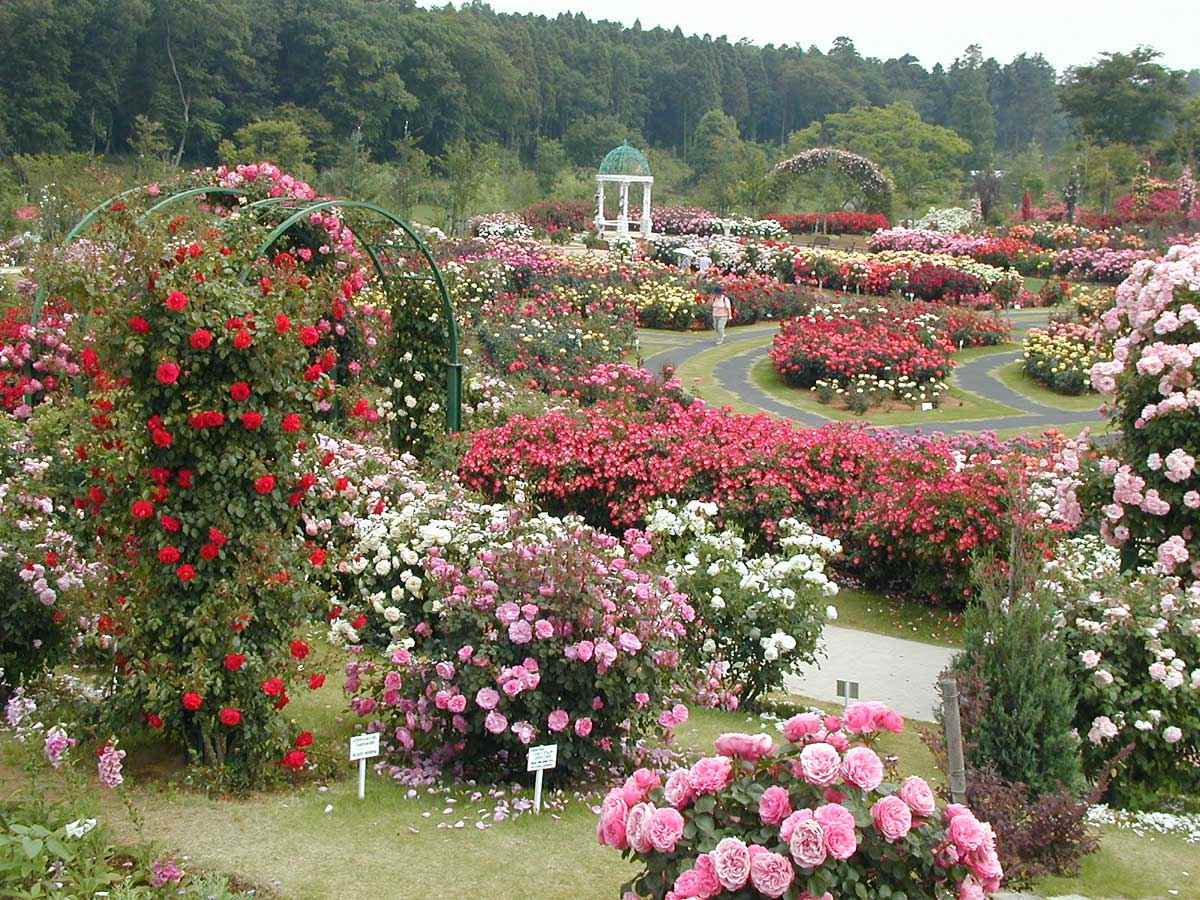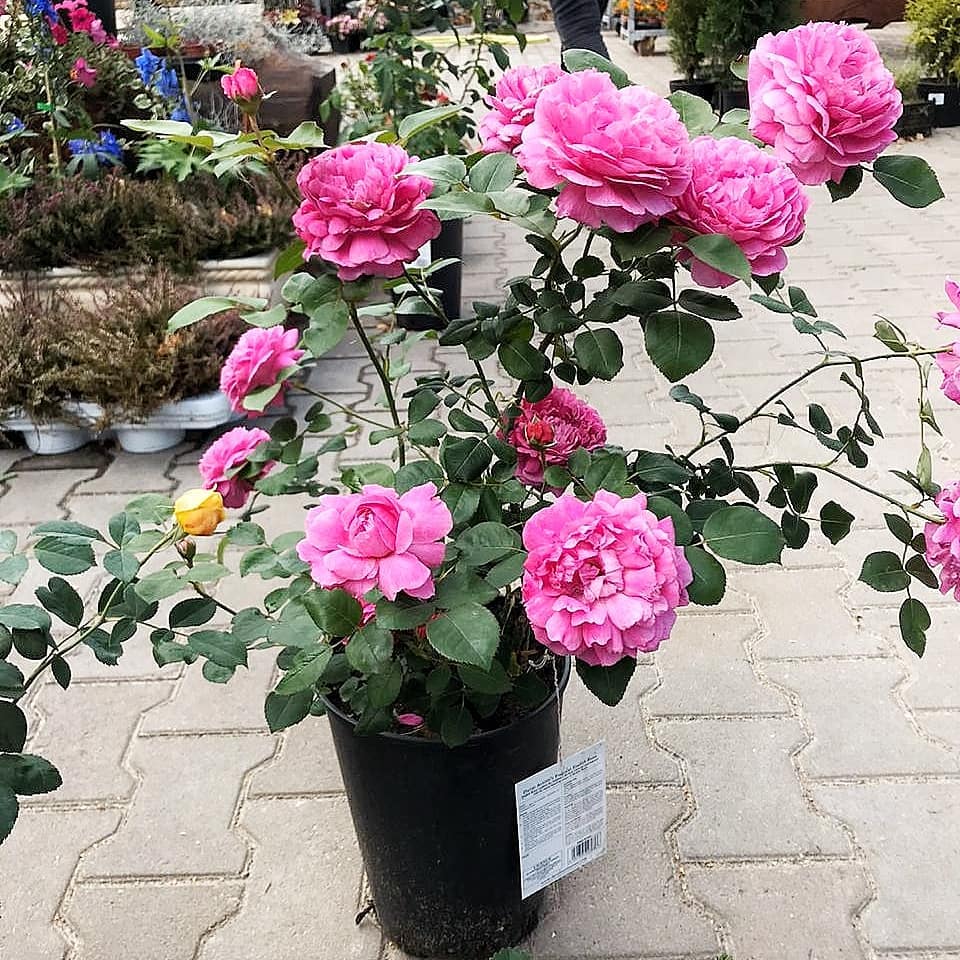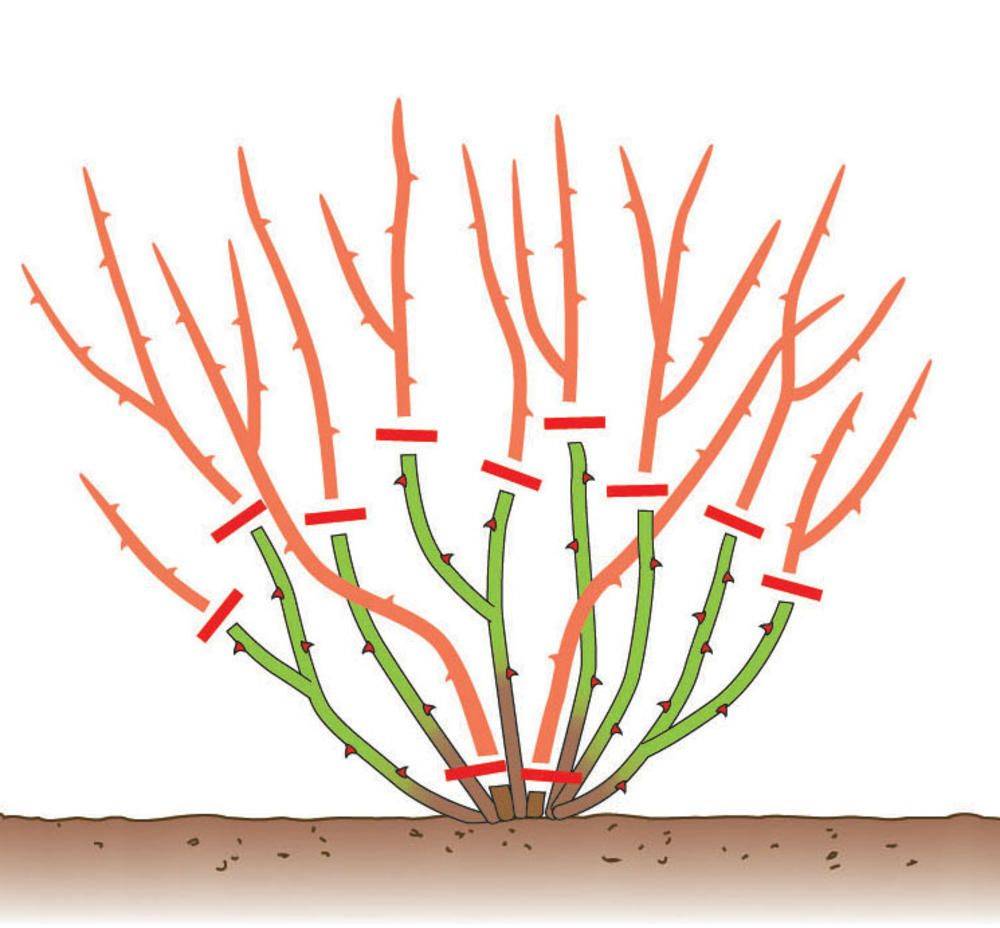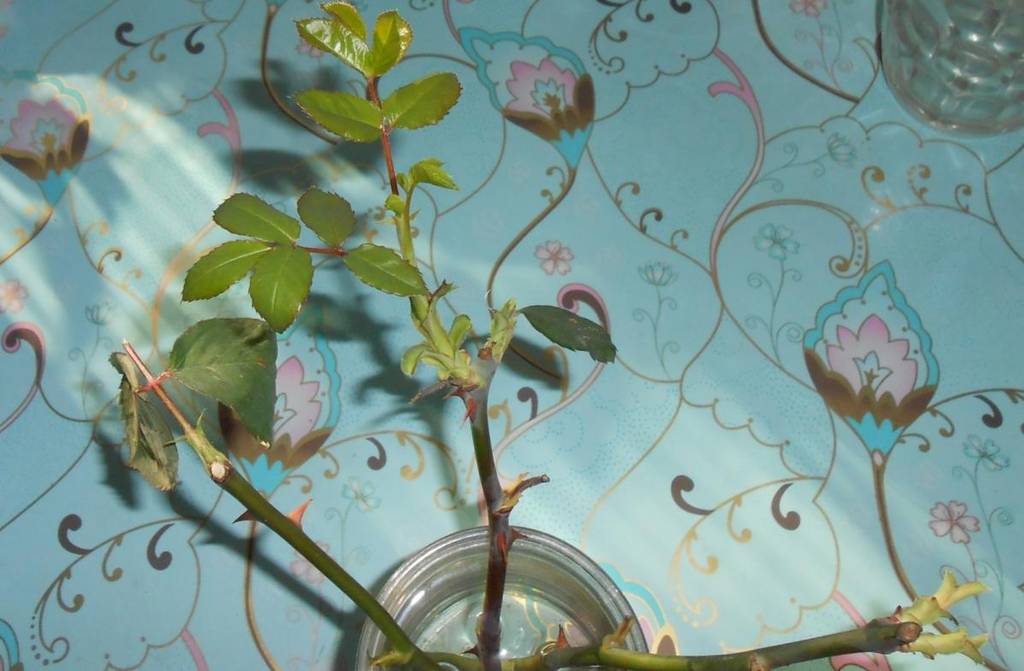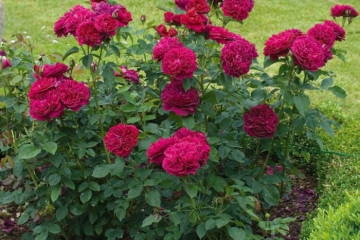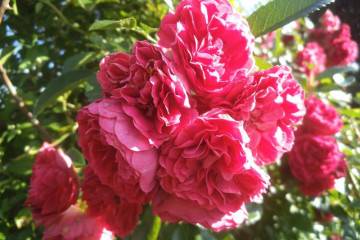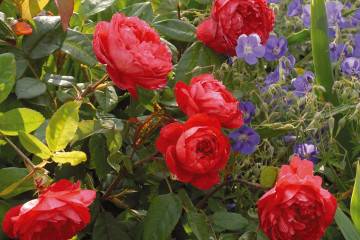Rosa Parade (Parade) - description of the Claiming variety
Content:
Climbing roses are unique flowers. They can be used in any landscape project. These unpretentious plants bloom profusely and for a long time. The buds are colorful, large, fragrant. The parade combines ease of reproduction, cultivation and long-lasting lush blooms.
Rose Parade (Parade) - what is this variety
Rose Parade was bred in the USA in 1953. It is included in the group of large-flowered roses claming class. The hybrid is based on New Dawn and World's Fair 'varieties.
Brief description and characteristics
Description of climbing rose Parade will start with foliage right. The culture is exceptionally beautiful. The leaf plates are dark green shiny. The leaves themselves densely cover all the shoots.
Also, the rose is distinguished by large bright buds. Their size reaches 10 cm in diameter. The double flower consists of 33 petals. The bud in the middle is luscious burgundy, and the closer to the edges, the shade changes from dark pink to bright scarlet. Most often, the buds are collected in inflorescences up to 3-5 pcs. The entire flowering period, the bushes exude a delicate aroma, and it lasts from the beginning of summer until frost.
The height of an adult bush reaches 4 m, and it occupies an area of about 2 m². Of course, a rose can only reach such conditions when it is tied to a support.
The bush is taken into growth almost immediately, and in the first year, single buds appear. Full bloom begins in the second season. Moreover, each repeated flowering in one season is distinguished by a change in the color of the bud. They get darker.
Advantages and disadvantages of the variety
The advantages of this variety are:
- renovation. A rose can bloom at least three times per season;
- easy reproduction;
- the beauty of buds and foliage;
- flowering duration;
- unpretentiousness;
- resistance to rain;
- good disease resistance.
Minus, perhaps, one - instability to excess water.
Use in landscape design
Climbing roses are often used in landscaping. The parade in this practice is no exception. The variety looks impressive even without flowers due to the dense emerald foliage.
Climbing rose Parade is optimal for improving the outbuildings of the country house, creating a hedge. In the gazebo entwined with the Parade, you can not only take a break from the heat, but also enjoy the delicate aroma.
Lovers of this variety often install arches specifically for it or plant it next to the columns.
Growing a flower: how to plant it in open ground
In Russia, the Parade rose is grown everywhere, except in permafrost areas. To do this, you need to find the right place and mix the soil mixture that is optimal for the culture.
First of all, you need to know that you can only sow purchased seeds. Sowing in open ground is possible with the onset of stable heat. Towards the end of summer, seedlings can be dived. For the winter, they will remain under cover in the same nursery. The bushes are planted in a permanent place for the third season.
Also, seeds can be sown and grown at home until spring. Then already grown plants are transplanted into the garden.
Seat selection
Climbing rose Parade from the claiming group is a dense plant, therefore it needs good ventilation of the crown. For optimal decorativeness, it should be planted in a sunny area.
How to prepare the soil and flower for planting
Parade grows well on loose soil with neutral acidity. This could be:
- loam;
- sandy loam soil;
- clayey soil.
It is recommended to enrich lean soil with clay and humus. Sour soil needs to be neutralized with lime, dolomite flour. Dense clay soil should be mixed with sand or peat.
Planting procedure step by step
The planting process looks like this step by step:
- A planting hole is dug, corresponding to the size of the root system.
- Drainage (expanded clay, stones) is laid at the bottom of the pit.
- From above it is poured with half a bucket of humus.
- The seedling is treated with a root stimulator (epin or root).
- The plant is set in a pit.
- It is filled with soil mixture and compacted.
- Water abundantly.
Plant care
To fully care for a rose, you need support. It can serve as outbuildings, specially installed arches, etc. In this case, it will be easy to water, weed and fertilize the plantings.
Watering rules and humidity
For the development of the root system inside the earth, it should be watered very abundantly. Watering frequency - once every 7-10 days. Watering can be combined with sprinkling and fertilization.
Top dressing and soil quality
For the first two years, the plant does not need additional feeding. Starting from the third season, organic matter is introduced in the spring with the addition of ash. You can use a ready-made fertilizer for roses.
Potassium supplements will not interfere with the rose before winter.
Pruning and replanting
Pruning is done in early spring and fall (after flowering). At the same time, 3-4-year-old damaged and weak shoots are removed at the root. The rest are trimmed to the first living kidney.
Features of wintering a flower
Parada's winter hardiness is good, but the bush needs shelter. Rather, the lashes can freeze, although the roots are not afraid of frosts down to -20.6 ° C.
Before winter, it is recommended to lay the whips on the ground and pin them. Then you can pour on them in a high layer:
- dry leaves;
- humus;
- coniferous needles.
Then everything is covered with agrofibre, natural fabric or spruce branches.
With the onset of warm days, the shelter is removed gradually. The plant opens completely after the threat of return frosts has receded.
Blooming rose
Starting from the second year, the Parade rose begins to bloom vigorously. Every year there are more buds. Accordingly, she needs more water.
A period of activity and rest
The parade is active from early spring until the very frost. The plant rests from November to April. This applies to garden and home shrubs.
Care during and after flowering
During flowering, the irrigation and fertilization regime must not be disturbed. Dried inflorescences should be removed regularly.
What to do if it does not bloom
The reason for the lack of flowering can be:
- lack of lighting;
- insufficient or excessive watering;
- lack of trace elements;
- diseases and pests.
Flower propagation
There are several ways to get new plants. Like all roses, Parade multiplies:
- cuttings;
- rooting of layering;
- vaccination;
- seeds.
Rooting of cuttings and cuttings must be completed by mid-summer. By winter, the seedlings should have a strong root system.
The most used propagation methods are cuttings and rooting of cuttings.
In the first case, you can use pruning after the formation of the rose. Cuttings should have at least 5-6 eyes. Before planting in soil or water, they must be treated with a rooting stimulator. The survival rate will occur faster if you create a greenhouse effect for the seedlings, that is, cover with a transparent cap.
For reproduction by layering, the lower mature branch is selected, which is dug along into the groove. The roots will grow back over time. The young plant should be left under the mother bush until the next season.
Diseases, pests and ways to control them
If the planting rules are not followed (thickened plantings, close occurrence of groundwater, stagnant air), the Parade can be struck by powdery mildew, black spot. To eliminate diseases, you can use folk methods, for example, processing with an ash solution. In advanced cases, it is better to use chemicals such as actara, actellik, fufanon.
Of the pests, the rose is loved by the spider mite, rose leafhopper. Spraying with intavir will help get rid of insects.
Once you plant the Parade correctly in the garden, you can admire the endless flowering for many years. Throughout the warm season, the climbing bush will be covered with young buds and open flowers at the same time. The night air will be filled with a wonderful scent.

